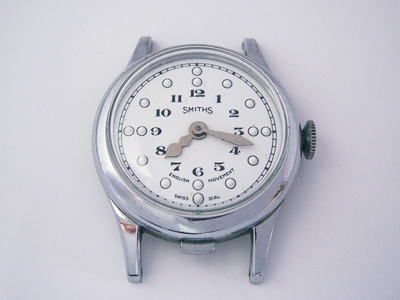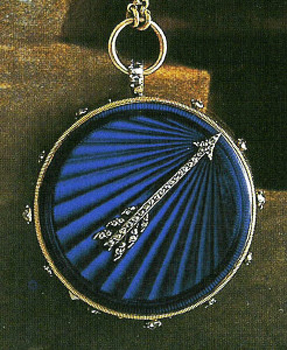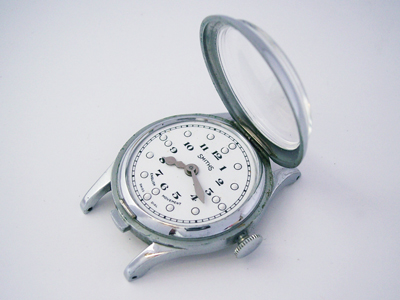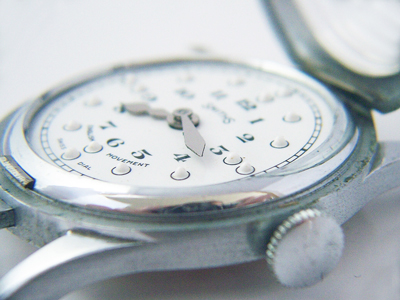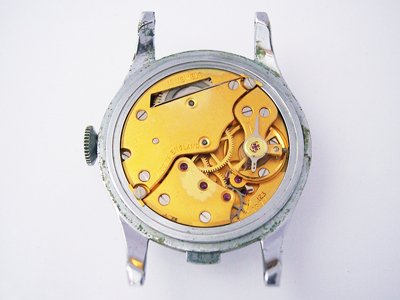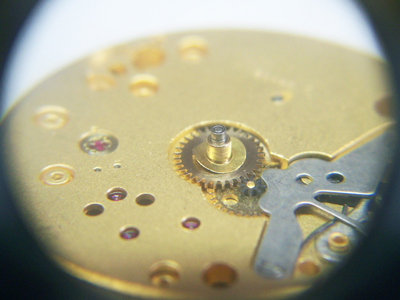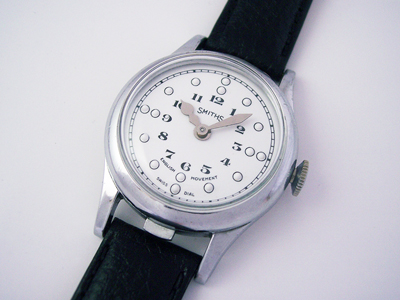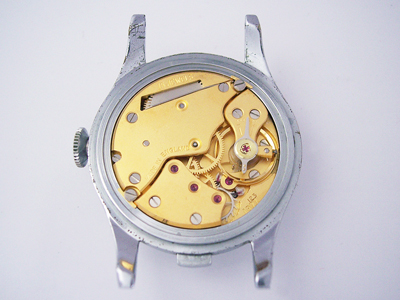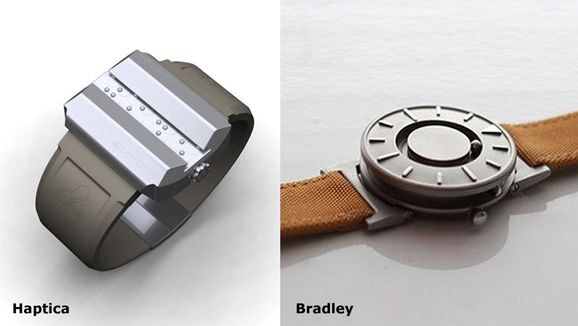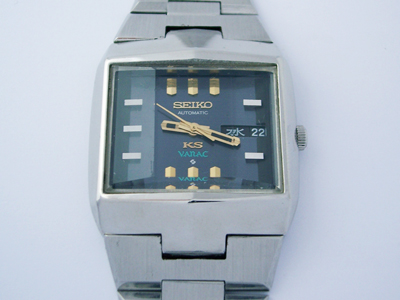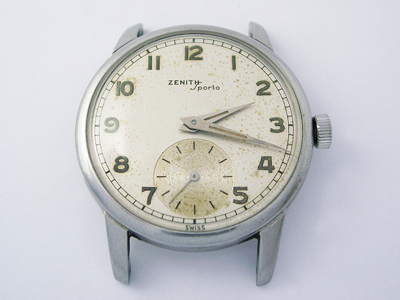Here’s another first on the blog, a vintage mechanical braille watch.
(Click pictures to enlarge)
Designed for the blind or visually impaired, the history of braille watches dates back to around 1800 when legendary watchmaker Abraham-Louis Breguet produced the first watches that could be felt rather than read to determine the time – “montre a tact” as they were called at the time. They were marketed not as watches for the blind, but as “night watches” that could be read in the dark – the only option prior to this being minute repeaters which sounded out the hours and minutes on gongs at the push of a button.
As well as being more discreet, montre a tact would undoubtedly have been easier to produce as minute repeaters were (and still are) very complicated and expensive watches to design and manufacture. However, watches for personal use were still the height of luxury in the early 1800’s and few people, blind or sighted, would have been able to afford a watch by Breguet.
The following picture shows a ‘montre a tact’ with a single (hour) hand and 12 diamonds mounted as hour markers around the edge of the case.
It wasn’t until the early 1900’s that watches were made specifically for the blind, namely pocket watches with thick gauge hands. These watches were often made in half hunter cases with the watch glass removed so that the hands could be felt through the top of the case without needing to open it. Wristwatches gradually replaced pocket watches but the principle remained the same, the watch hands were felt in relation to raised markers on the dial.
With the advent of quartz and LCD watches in the 1970’s a new era of ‘talking watches’ was introduced and is still widely used today. Here is a short video of a typical (Seiko) talking watch from the 1980’s.
The watch in this post dates to the 1960’s and is typical of a braille watch from that period. At the bottom of the case is a button which when pressed, flips open the top of the watch case so the wearer can determine the time.
As you’ll see in the picture below, the hands are made from a much heavier gauge metal than regular hands so as not to be easily damaged and the hands are also a much tighter fit so they are not easily displaced. You’ll also notice that the hour markers are raised from the face of the dial.
Inside this watch is a Smiths cal. 12.15, a 15 jewel, 18,000bph manual calibre very similar in design to the cal. 60466E in the Smiths W10 military watches – see here for a post I wrote about a W10.
The watch arrived running but obviously hadn’t been serviced for some time and the hands were misaligned. When disassembling the watch for servicing I noticed that the dial washer was missing from the watch which was undoubtedly the cause of the hand alignment problem.
A dial washer is a thin brass washer placed over the hour wheel so that when the dial is in place the hour wheel is pressed down slightly and stays in constant contact with the minute wheel. Without this the hour wheel can easily rise up and skip a tooth.
With the watch serviced and a new dial washer fitted, the only thing left to do was clean the case, dial and hands to complete the job.
As a final note it’s worth mentioning that just as in other areas of watchmaking, development is still ongoing in the world of braille watches with two of the most interesting projects in the last few years being the Haptica and the Bradley.
The Haptica is an award winning concept and represents the time much like a digital watch ie. in four separate digits. The numbers 0 to 9 are represented by a combination of raised dots in standard braille format, and the wearer reads/feels the dots from left to right to read the time – see this link for a demonstration.
The Bradley concept is formed around two captive ball bearings for the hour and minute – the inner bearing represents the minute and the outer bearing the hour. I find this quite a curious design quirk as it goes against convention and surely with a larger diameter it would be easier to determine the minute accurately if it was on the outside? Anyway, that didn’t put too many people off as the watch recently raised almost US$600,000 on Kickstarter, smashing its funding target of $40,000 – see here for more details.
Rich.
** Many thanks to Olivia Brown for letting me feature her watch on the blog. **

